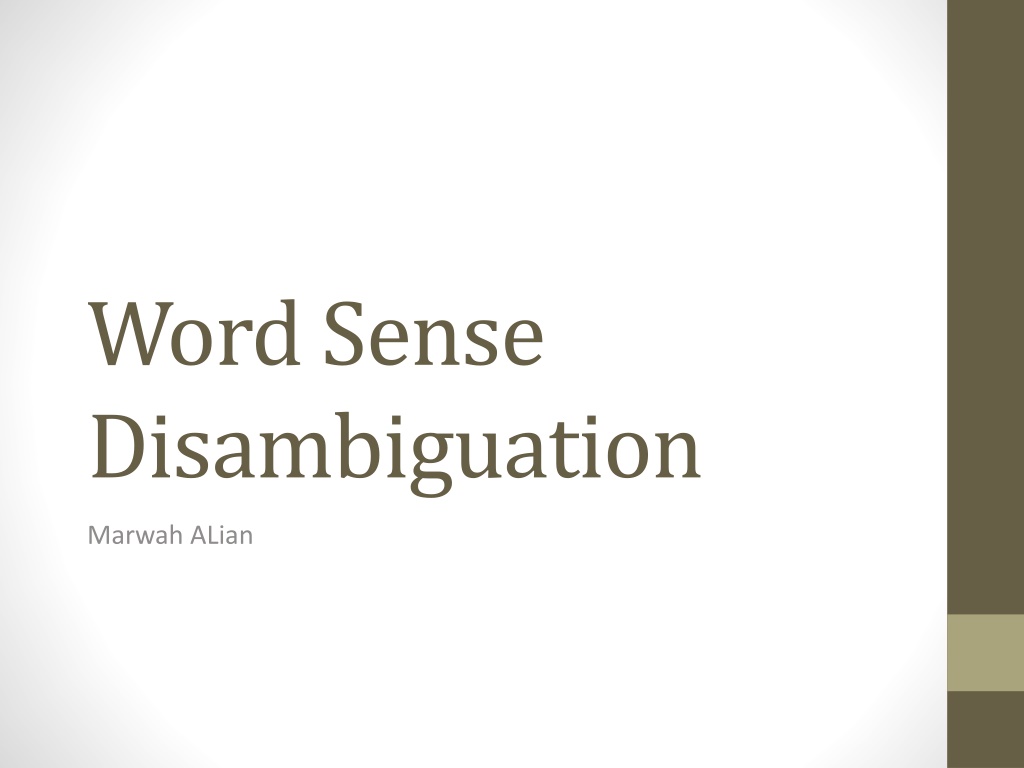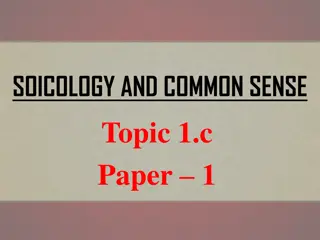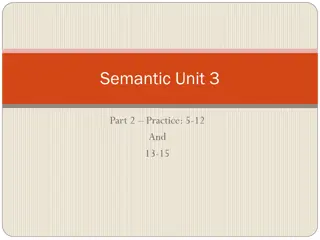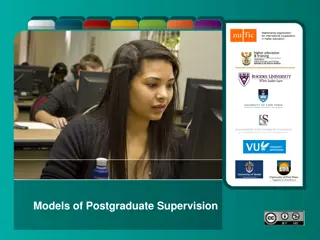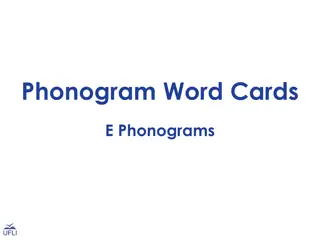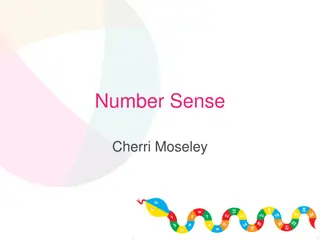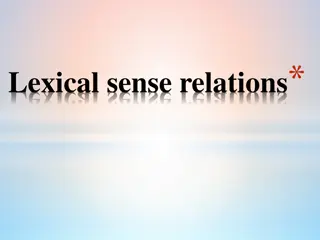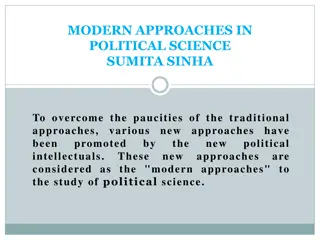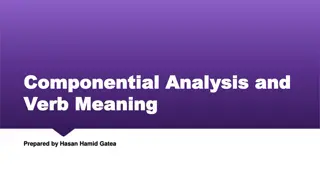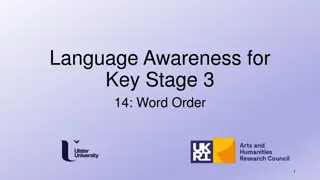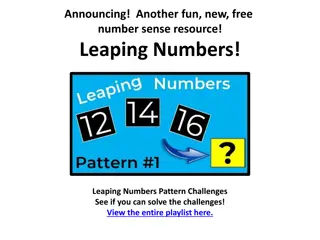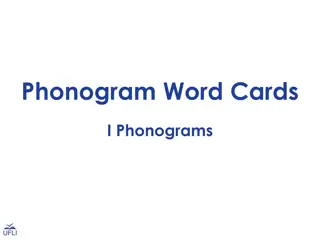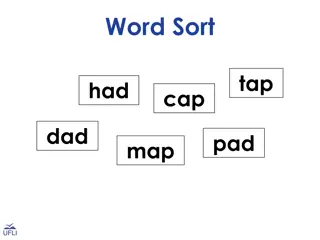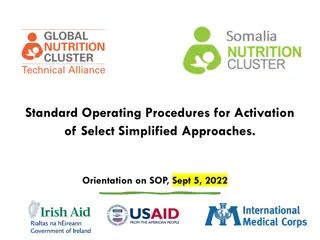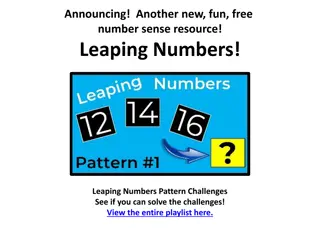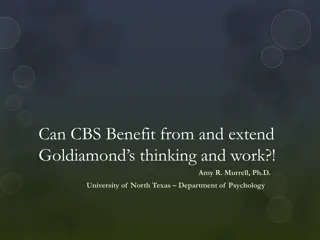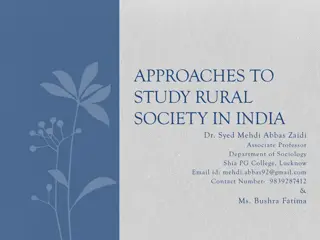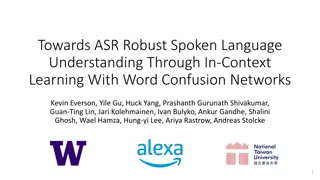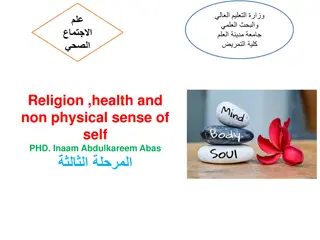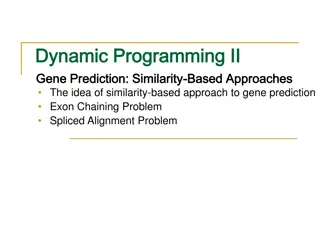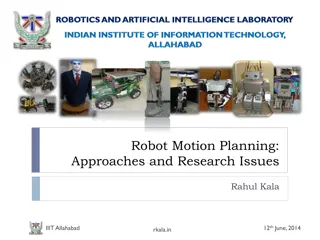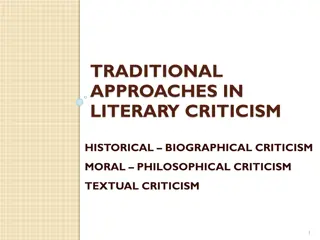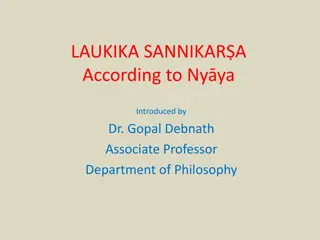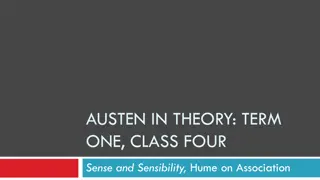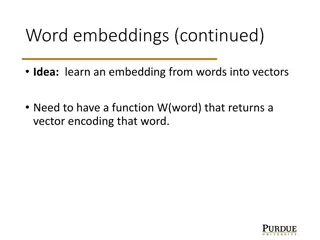Understanding Word Sense Disambiguation: Challenges and Approaches
Word Sense Disambiguation (WSD) is a complex task in artificial intelligence that aims to determine the correct sense of a word in context. It involves classifying a word into predefined classes based on its meaning in a specific context. WSD requires not only linguistic knowledge but also knowledge of the world. Two main philosophies for WSD exist: deep approaches and shallow approaches. Evaluating WSD approaches is challenging due to variations in training sets and resources. In Semitic languages like Arabic, WSD faces additional challenges like omitted diacritics and agglutinated affixes. Approaches to WSD include knowledge-based approaches, selectional preferences, overlap-based approaches, and machine learning-based approaches.
Download Presentation

Please find below an Image/Link to download the presentation.
The content on the website is provided AS IS for your information and personal use only. It may not be sold, licensed, or shared on other websites without obtaining consent from the author. Download presentation by click this link. If you encounter any issues during the download, it is possible that the publisher has removed the file from their server.
E N D
Presentation Transcript
Word Sense Disambiguation Marwah ALian
Word Sense Disambiguation Word sense disambiguation or discrimination (WSD) is the task of classifying a token (in context) into one of several predefined classes . WSD/WSI is considered one of the hardest tasks in artificial intelligence (AI). Computationally determining which sense of a word is activated by its use in a particular context. E.g. I am going to withdraw money from the bank.
WSD requires It often requires not only linguistic knowledge, but also knowledge of the world (facts). For example: we use world knowledge to decide that the intended sense of bass in they got a grilled bass is a fish, and not a musical instrument (since we know that typically one would grill fish, not instruments)
Philosophies for dealing with WSD There are two main philosophies for dealing with WSD: deep approaches and shallow approaches; Shallow approaches don't try to understand the text. They just consider the surrounding words. It depends on the rule of: "one sense per discourse" as a generalization for "one sense per collocation" rule; where words are syntagmatically related as they tend to appear together in same syntagma (sentence) . This approach uses a training corpus of words tagged with their word senses. Actually, it gives better results in practice, but of course it can be confused by tricky sentences
Difficulty in Evaluation Comparing and evaluating different WSD approaches is difficult because of the different training sets, test sets, and knowledge resources adopted. WSD is very important in many Information Retrieval (IR) aspects: filtering results, better ranking, giving suggestions, and query expansion. WSD affects the recall and precision of any text mining (TM) classifier.
WSD in Semitic Languages WSD and WSI in Semitic languages such as Arabic have greater challenges than in English. This is due to the fact that : (1) in many cases short vowels are only represented via diacritics that are often omitted in modern writing, and (2) several frequent prepositions, and many types of pronouns (e.g., possessive or prepositional pronouns) are expressed as agglutinated affixes. Hence the biggest challenge for Semitic language semantic processing for WSD is determining the appropriate unit of meaning that is relevant for WSD/WSI
WSD Approaches Knowledge Based Approaches WSD using Selectional Preferences (or restrictions) Overlap Based Approaches Machine Learning Based Approaches Supervised Approaches Semi-supervised Algorithms Unsupervised Algorithms Hybrid Approaches 7
WSD Approaches Knowledge Based Approaches Rely on knowledge resources like WordNet, Thesaurus etc. May use grammar rules for disambiguation. May use hand coded rules for disambiguation. Machine Learning Based Approaches Rely on corpus evidence. Train a model using tagged or untagged corpus. Probabilistic/Statistical models. Hybrid Approaches Use corpus evidence as well as semantic relations form WordNet.
Example of signatures describing the possible meanings of the word
Arabic Word Sense Disambiguation researches: A Semi-Supervised Method for Arabic Word Sense Disambiguation Using a Weighted Directed Graph,Laroussi Merhbene,Anis Zouaghi, Mounir Zrigui,2013 Ambiguous Arabic Words Disambiguation: The results, Laroussi Merhbene,Anis Zouaghi, Mounir Zrigui,2009 A Hybrid Approach for Arabic Word Sense Disambiguation, ANIS ZOUAGHI,2012 Using Fuzzifiers to Solve Word Sense Ambiguation in Arabic Language, Madeeh Nayer El-Gedawy, 2013
Summary WSD is : one of the central challenges in NLP. Ubiquitous across all languages. Needed in: Machine Translation: For correct lexical choice. Information Retrieval: Resolving ambiguity in queries. Information Extraction: For accurate analysis of text. Computationally determining which sense of a word is activated by its use in a particular context. E.g. I am going to withdraw money from the bank. A classification problem: Senses Classes Context Evidence One issue with all the work on Arabic WSD is the problem of researchers not using a standard data set to allow for benchmarking.
References Madeeh Nayer El-Gedawy, Using Fuzzifiers to Solve Word Sense Ambiguation in Arabic Language , 2013. ImedZitouni, Natural Language Processing of Semitic Languages , Springer, 2014 Laroussi Merhbene,Anis Zouaghi, Mounir Zrigui, Ambiguous Arabic Words Disambiguation: The results, 2009 .
